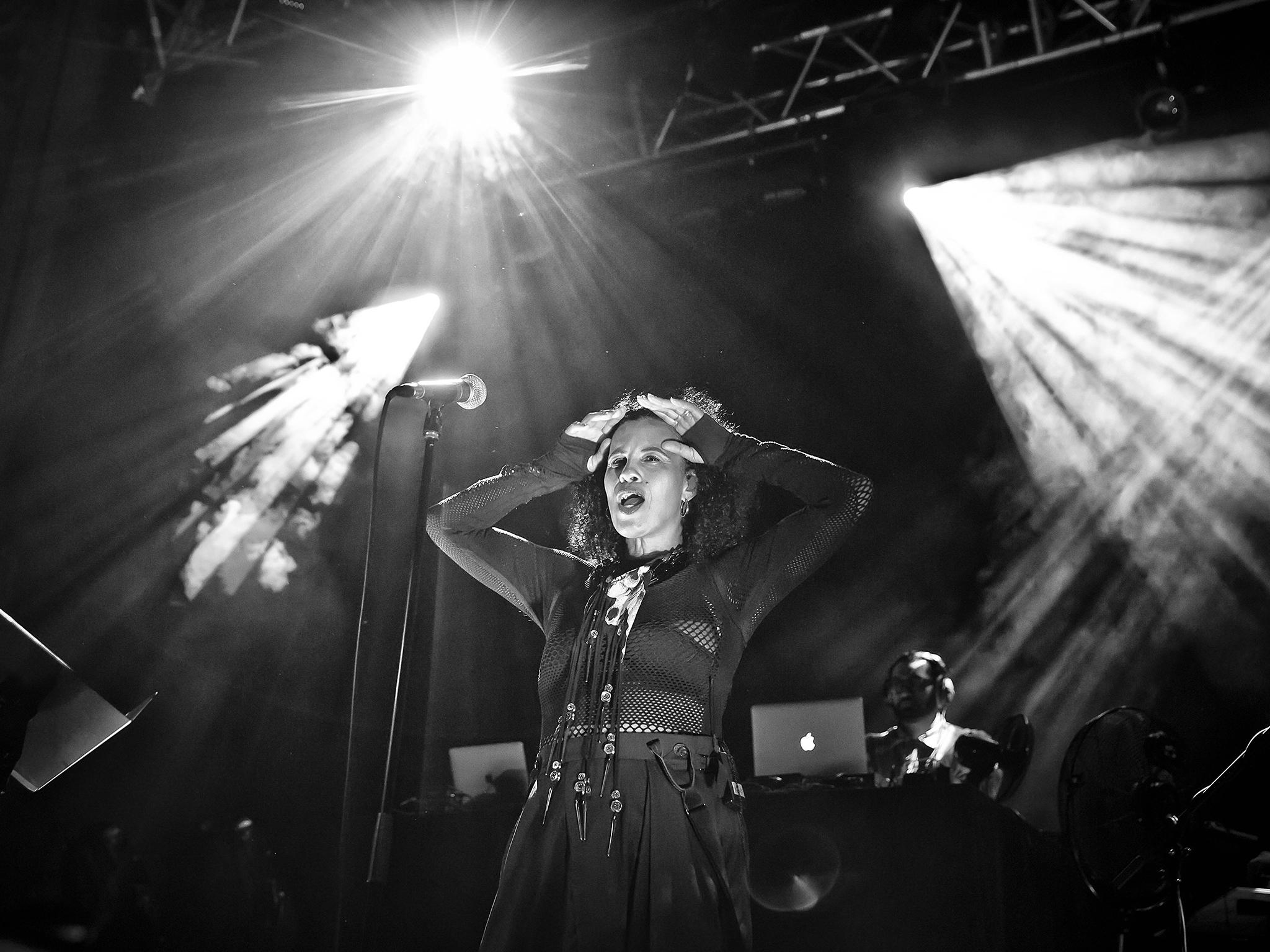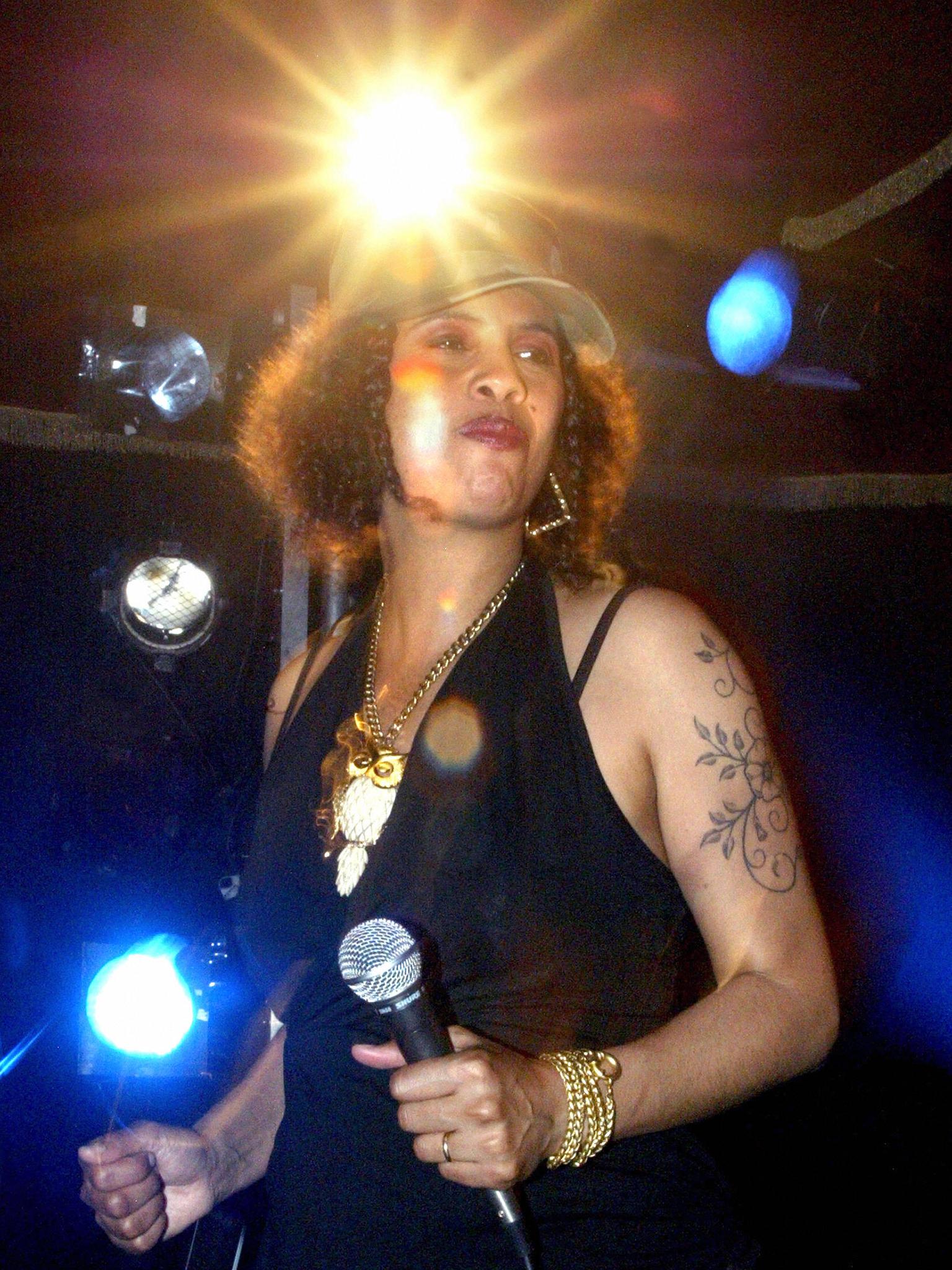Neneh Cherry on Trump, avoiding pop stardom and working with Four Tet
The 54-year-old has found a home in multiple genres through her career. Now, she says her latest album 'Broken Politics' channels her anger at the state of US politics

Your support helps us to tell the story
From reproductive rights to climate change to Big Tech, The Independent is on the ground when the story is developing. Whether it's investigating the financials of Elon Musk's pro-Trump PAC or producing our latest documentary, 'The A Word', which shines a light on the American women fighting for reproductive rights, we know how important it is to parse out the facts from the messaging.
At such a critical moment in US history, we need reporters on the ground. Your donation allows us to keep sending journalists to speak to both sides of the story.
The Independent is trusted by Americans across the entire political spectrum. And unlike many other quality news outlets, we choose not to lock Americans out of our reporting and analysis with paywalls. We believe quality journalism should be available to everyone, paid for by those who can afford it.
Your support makes all the difference.Neneh Cherry’s career path has been marvellously circuitous. She had international pop hits like “Buffalo Stance” in the late 1980s and early 1990s and ventured through post-punk, hip-hop, jazz and an array of collaborations with Tricky, Youssou N’Dour, Chrissie Hynde and Cher, among many others. Broken Politics her new studio album – only her fifth under her own name – loops back and leaps ahead at the same time.
Cherry, 54, made Broken Politics in this music-loving Catskills town, where she was a regular visitor in the mid-1970s. She recorded in the studio of a lifelong friend, the vibraphonist and teacher Karl Berger, who started the Creative Music Studio in 1971. The participants there in the 1970s included the trumpeter Don Cherry, Neneh’s stepfather, who was a member of Ornette Coleman’s groundbreaking free-jazz quartet and a perpetual musical explorer. And the album’s producer is a current resident: Kieran Hebden, 40, the Englishman better known as the prolific electronic musician Four Tet.
Broken Politics was recorded in February 2017, a month after the inauguration of President Donald Trump. “I don’t even want to mention his name or see his bloody hand movements,” Cherry says via Skype from Ibiza, in a speaking voice an octave below where she usually sings. “I just lose it. But I feel like, OK, maybe I can get something from feeling this upset.”
In Cherry’s lyrics, fraught issues – refugees (“Kong”), abortion (“Black Monday”), guns (“Shotgun Shack”), disinformation (“Faster Than the Truth”), women’s rights (“Soldier”) – jostle with personal reflections in tracks that are most often meditative, not strident. “It’s my politics living in a slow jam,” she coos in the album’s pivotal song, “Synchronized Devotion”. As she has since her 1989 solo debut album Raw Like Sushi, Cherry wields her convictions in lithe, airy melodies.
“It’s what we see through our eyes that’s coming back out in sound. That’s the only way I know,” Cherry says. “It’s very much about saying things but also about listening, hearing and digesting. But I think that I’d be wary of saying what are the answers. We’re trying to figure out, like a lot of us, how do we move forward? How does one stay hopeful in life right now?”
Serious thoughts, a buoyant spirit and a disregard for genre boundaries have defined Cherry’s music since she emerged on her own in the 1980s. She is the daughter of a drummer from Sierra Leone, Amadou Jah, and a Swedish painter, Monika (Moki) Karlsson, who married Don Cherry soon after she was born. The family had a bohemian life, performing and making visual art, living in Sweden and in the United States.
In 1978, a 14-year-old Neneh headed to London, where she found kindred spirits in the era’s art-punk scene. She performed and recorded with the Slits, New Age Steppers and Rip, Rig + Panic. She worked as a reggae DJ on a pirate radio station; she did a little fashion modelling, and she wrote songs with assorted musicians.
Among them was Cameron McVey, an English musician who became her longtime songwriting partner and, in 1990, her husband. He was the executive producer of Raw Like Sushi. With its blithe, brash melding of pop, hip-hop, salsa, electronics and gleeful female empowerment – and with two Top 10 singles in the United States, “Buffalo Stance” and “Kisses on the Wind” – the album brought Cherry a Grammy nomination as Best New Artist. (The Grammys chose, ahem, Milli Vanilli.) Sometimes, she has said, royalties from “Buffalo Stance” still pay her rent.
Cherry remained a pop contender into the mid-1990s, with her 1992 album Homebrew and the 1996 Man, which included the worldwide hit “7 Seconds”, a duet with Youssou N’Dour from Senegal. But she was also caring for Don Cherry, who died in 1995, while growing increasingly disillusioned with the machinery of pop stardom.
Enjoy unlimited access to 100 million ad-free songs and podcasts with Amazon Music
Sign up now for a 4 month free trial (3 months for non-Prime members)
Enjoy unlimited access to 100 million ad-free songs and podcasts with Amazon Music
Sign up now for a 4 month free trial (3 months for non-Prime members)
“I definitely knew which compromises I did not want to make,” she says. “What I found slightly daunting after the success of ‘Raw Like Sushi’ was this feeling where you end up in a little bit of a cage,” she added. “There were definitely restrictions and a funny feeling, a worry about becoming competitive rather than taking risks. Or not just taking risks, but just growing.”
She added, with a laugh, “I’m sure I could have had a lot more money in the bank if I had played my cards differently – maybe.”
But she never rejected pop songwriting. “I always enjoy a pop song – it’s a great, life-making thing,” she says. “I definitely use pop sensibilities to write some of the songs, and some of the structures are quite pop.”

But for more than a decade, she set aside pop star striving, appearing now and then as a guest vocalist (with, among others, Gorillaz and Peter Gabriel) or in songs for soundtracks. In 2006, she made a low-key re-emergence in a group called CirKus that also included, under pseudonyms, her husband and their older daughter, Tyson, billed as Lolita Moon. And while she and McVey continued to write songs, she delivered them in decidedly non-pop settings.
She made an album in 2011 with a Swedish jazz trio, The Thing, in a collaboration billed as The Cherry Thing. And then she returned to top billing, backed by the drums-and-keyboard duo RocketNumberNine, on her 2014 album Blank Project. With the release of that album, Cherry – who had toured Europe repeatedly – finally played her first concert as a bandleader in New York City in 2015, a belated local debut, at the Highline Ballroom, that was rapturously received. She is planning another New York City concert on 2 December at National Sawdust in Brooklyn.
Hebden produced Blank Project, largely as a document of live arrangements Cherry had worked out with the duo. But for Broken Politics she entrusted him with creating all the instrumentals. She and McVey sent voice-and-keyboard demos to Hebden; he chose sounds and built productions. Then, for just five days in Woodstock, Cherry sang and Hebden tweaked the music.
“They always have hooks in their songs,” Hebden notes. “Even if it’s not intended to be a pop song, all the songs on all their records always have a little hook.”
Broken Politics is filled with the sounds of an international assortment of instruments – piano, kora, harp, wooden flute, steel drums, hand bells – that echo the cultural cross-pollination Berger encouraged at Creative Music Studios. Yet except for a cameo appearance by Berger on vibraphone, and some snippets of city life recorded on Cherry’s cellphone, all of the album’s music came from Hebden’s laptop, using libraries of instrument sounds, samples and synthetic ones.
“I made the whole thing in the computer,” Hebden says in an interview at Berger’s studio. “I knew I was making something that was going to evoke the mood, that you would listen to it and it would sound like there were a group of musicians playing there. But nothing like that happened at all, ever.”
The studio is unassuming but comfortable: a converted basement with a glassed-in control room and windows that open on a woodsy backyard view. High-quality microphones share a few shelves with old reel-to-reel tapes, wind chimes and books including Music Universe, Music Mind, a 1996 history of Creative Music Studios. When the album was made, Hebden recalled, there were many more tapes around: some 500 hours of Creative Music sessions recorded through the decades, an archive that was being digitised for the collection of Columbia University. No doubt magnetic particles from the old tapes hung in the basement air.
“The music is made for real, even if it’s loops and coming from a computer,” Cherry says. “To me there are definitely sounds and a feeling in some of the tracks that remind me of the music that was made in the room, some of the music that brought me to where I’m sitting at now – the music that my parents made and the music I grew up around. It’s interesting, using the idea of organic music but making it in the way we’re making music – the way we carry the torch.”
© New York Times
Join our commenting forum
Join thought-provoking conversations, follow other Independent readers and see their replies
Comments